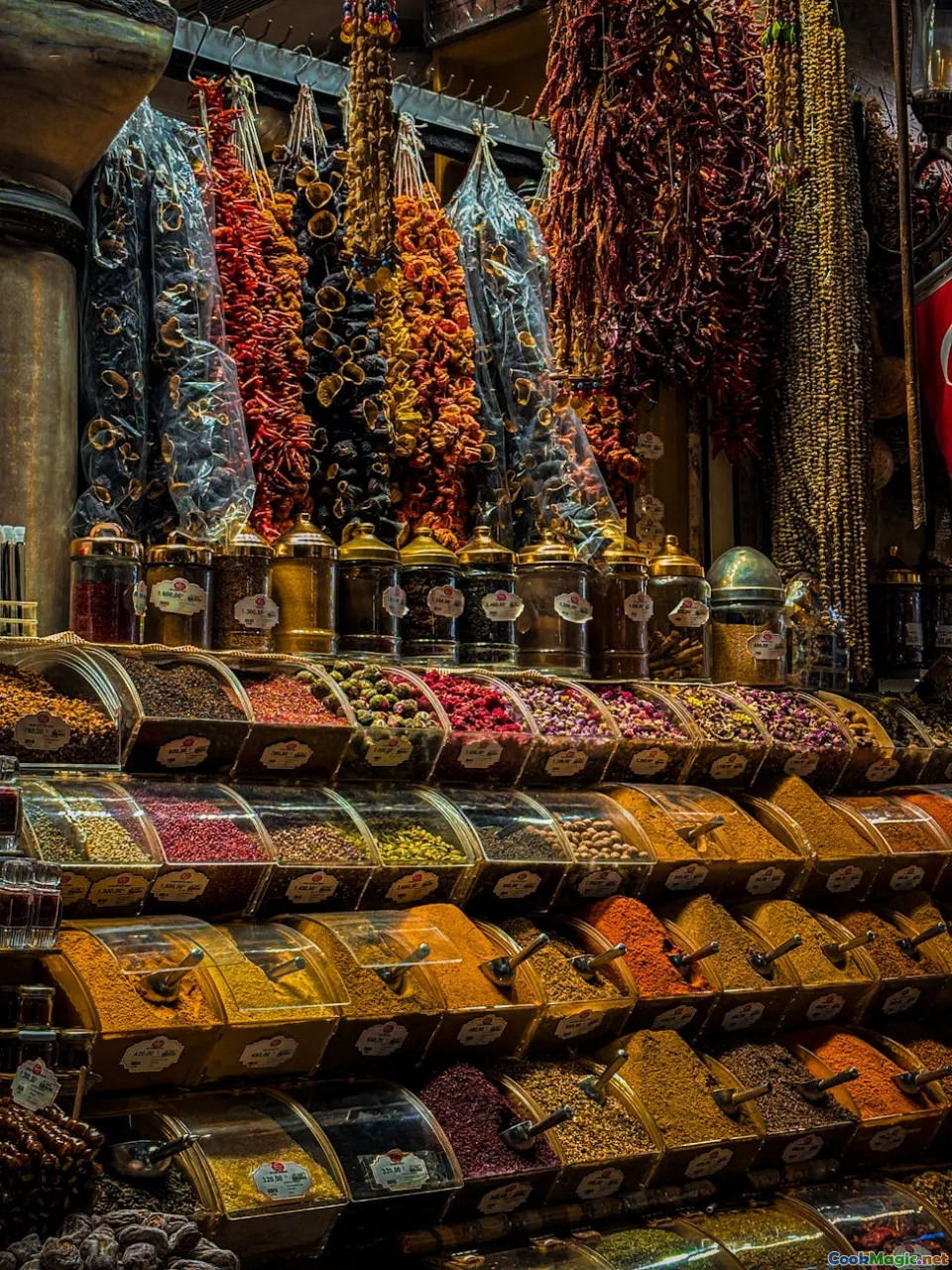Exploring Middle Eastern Spices
8 min read Discover the rich tapestry of Middle Eastern spices, their cultural significance, and how they elevate dishes with vibrant flavors and aromas. April 21, 2025 08:55
Exploring Middle Eastern Spices
Imagine walking through a bustling souk at dawn, the air thick with the intoxicating aroma of freshly ground spices. The vibrant colors, the rhythmic sounds of merchants calling out, and the promise of culinary treasures hidden within their stalls. Middle Eastern cuisine, renowned for its complex flavors and aromatic dishes, is a celebration of spices—each with its own story, tradition, and personality. These spices are more than just ingredients; they are the soul of the region’s culinary identity.
The Cultural Significance of Spices in the Middle East
Spices have been integral to Middle Eastern culture for thousands of years, dating back to ancient civilizations such as the Egyptians, Persians, and Ottomans. They served not only as flavor enhancers but also as symbols of wealth, health, and spiritual significance.
In historical trade routes like the Silk Road and the Spice Route, Middle Eastern merchants became the custodians of these precious commodities. These routes facilitated the exchange of spices, herbs, and knowledge, weaving a complex tapestry of culinary evolution that persists today.
The use of spices in Middle Eastern cooking often signifies hospitality and generosity. Offering a richly spiced dish is a way of welcoming guests, sharing culture, and showcasing culinary mastery. From the fragrant rice pilafs to the hearty stews, spices are woven into the fabric of daily life.
Key Middle Eastern Spices and Their Origins
1. Za'atar
Za'atar is a quintessential Middle Eastern spice blend that embodies the region’s love for aromatic herbs. It typically combines sumac, sesame seeds, thyme, oregano, and marjoram. Its tangy, nutty flavor is both comforting and invigorating.
Culinary uses: Sprinkled over flatbreads like manakish, mixed with olive oil as a dip, or used to season roasted vegetables and meats.
2. Sumac
With its deep crimson hue and tart, lemony flavor, sumac adds a vibrant acidity to dishes. It’s made from dried and ground berries of the sumac plant, harvested from the Levant and Mediterranean regions.
Culinary uses: Sprinkled over salads, grilled meats, or incorporated into spice rubs.
3. Cinnamon
Often associated with desserts, cinnamon in Middle Eastern cuisine has a warm, sweet aroma that elevates both sweet and savory dishes. It comes from the inner bark of Cinnamomum trees, with varieties originating from Sri Lanka to the Middle East.
Culinary uses: Used in rice puddings, coffee, and meat stews like tagine.
4. Cumin
A staple in Middle Eastern cooking, cumin offers an earthy, nutty flavor that grounds many dishes. Its seeds are roasted to deepen their aroma before being ground.
Culinary uses: Integral to kebabs, hummus, and lentil soups.
5. Cardamom
With its sweet, floral notes, cardamom is often used in desserts and coffee. It’s a small, green pod that packs a powerful aromatic punch.
Culinary uses: Flavored coffees, baklava, and rice dishes.
The Art of Spice Blending
One of the most beautiful aspects of Middle Eastern spices is their versatility and the artistry involved in blending them. Each family or region may have its own secret recipes passed down through generations.
Crafting a Perfect Spice Mix
Creating your own spice blends can be a rewarding experience. Start with fresh, high-quality spices. Toast whole spices lightly in a dry skillet to enhance their aroma, then grind them finely.
For example, a traditional Baharat blend includes black pepper, coriander, paprika, cumin, cloves, and nutmeg. It’s used to season meats, vegetables, and even soups, adding a warm, smoky depth.
Experimenting with Flavors
Don’t be afraid to experiment—try mixing sumac with pomegranate molasses for a tangy marinade or blending za’atar with olive oil for a fragrant bread dip. The playful combination of spices can transform everyday ingredients into extraordinary dishes.
Iconic Middle Eastern Dishes and Their Spices
1. Shawarma
Marinated in a mixture of cumin, coriander, paprika, and garlic, shawarma is a street food staple. The spices tenderize the meat and impart a smoky complexity.
2. Mujaddara
A comforting lentil and rice dish seasoned with cumin and cinnamon, topped with caramelized onions. It’s a humble yet flavorful example of spice harmony.
3. Baklava
Layers of flaky pastry, chopped nuts, and honey are infused with cinnamon and cardamom—creating a symphony of sweet, spicy aromas.
4. Kibbeh
A savory meat and bulgur dish seasoned with cinnamon, allspice, and cumin, often baked or fried to golden perfection.
Personal Reflections and Culinary Inspiration
As a food lover, discovering Middle Eastern spices is akin to uncovering a hidden world of flavor. The first time I ground fresh sumac and sprinkled it over a simple salad, I was transported to the bustling markets of Beirut. The tangy brightness awakened my palate in ways I never anticipated.
Cooking with these spices also evokes a sense of connection—a bridge to ancient traditions, family recipes, and the stories of merchants who once traveled long distances to bring these treasures home.
Tips for Incorporating Middle Eastern Spices into Your Cooking
- Start small: Introduce one or two spices at a time to understand their flavor profiles.
- Use fresh spices: Whole spices retain their aroma longer; grind as needed.
- Toast spices: Lightly toasting enhances their aroma and depth.
- Balance flavors: Middle Eastern cuisine often balances sweet, sour, salty, and spicy elements—aim for harmony.
- Experiment: Don’t be afraid to blend spices to create your own signature flavors.
Conclusion
Exploring Middle Eastern spices is a journey into a world of rich history, vibrant aromas, and complex flavors. These spices are more than ingredients—they are storytellers, cultural ambassadors, and catalysts for culinary creativity. Whether you’re seasoning a simple salad or crafting a grand feast, embracing these spices can transform your cooking and deepen your appreciation for the region’s extraordinary culinary heritage.
Let your kitchen become a marketplace of flavors, and your dishes a tribute to centuries of tradition and innovation. Happy spicing!









